The Compendium of the Catechism of the Catholic Church teaches us that the conjugal act has four goods: “The goods of conjugal love, which for those who are baptized is sanctified by the sacrament of Matrimony, are unity, fidelity, indissolubility, and an openness to the procreation of life” (no. 495).
However, if we consider the sign of the sacrament of marriage, we can say that the conjugal act has five goods or values (or even meanings), which we will discuss in the following sequence indicated below.
- The original unity of man and woman
- The original fidelity of man and woman
- The original indissolubility of the marriage between man and woman
- The original procreative meaning of the conjugal act
- The sacramental sign of the original sacrament and of the sacrament of marriage as reinstituted by Christ
We shall base our discussions on the beautiful teachings about human sexuality and the conjugal act that St. John Paul II left us in his catechesis on the theology of the body (TOB).
However, before we engage in a discussion about these five goods or values, we must clarify certain concepts.
Terminology
First of all, we have called these five gifts of God to human sexuality and the conjugal act “goods” and “values.” These two terms are not exactly the same but are very much related.
The reason they are called “goods” is two-fold. First, they are called “goods” to emphasize their objective existence. These goods have been inscribed by God himself in human nature: in both the bodies and souls of man and woman from the beginning. More concretely, they have been inscribed by God in human sexuality and the conjugal act.
Second, the fact that they are called “goods” indicates that God created human sexuality, marriage and conjugal love as goods in themselves and as a gift to man and woman. Any consideration of human sexuality and of sexual relations within marriage as something “dirty” or “inferior” is not only wrong, but also a heresy! Throughout her history, the Church has had to defend human sexuality, marriage and conjugal love from the pernicious errors of sects like Gnosticism, Manicheism, Albigensianism, and Jansenism, to name a few.
What about the term “values”? St. John Paul II taught in his TOB that because the human person has a soul, he or she has also been gifted by God with a subjectivity, an interior moral and spiritual life. When man and woman discover, accept and cherish these God-given goods, they are called “values.” In sum, a value is the positive acceptance in one’s subjectivity of a human good.
In this way, the Holy Father emphasized the connection that should always exist between the objective goods inherent in our human nature and in God’s commandments (which defend and promote those goods), on the one hand, and the subjective appreciation of those goods by the human person, called values, on the other. The Pope also called the set of human values in the interior life or subjectivity of the human person by the term ethos.
In our article “Adultery and the Theology of the Body”, we clarified the difference between subjectivity and subjectivism. We refer the reader to that article for further information on this issue.
Related: Adultery and the Theology of the Body?
A quick word on the term “meaning.” This term is used to refer to the twofold meaning of the conjugal act. As Compendium no. 496, tells us:
The conjugal act has a twofold meaning: unitive (the mutual self-giving of the spouses) and procreative (an openness to the transmission of life). No one may break the inseparable connection which God has established between these two meanings of the conjugal act by excluding one or the other of them.
In this particular context of the conjugal act, the Church uses the term “meaning” instead of “goods” or “values,” even though they are really the same, because She wants to emphasize the finality or intrinsic purpose of these goods and values as inscribed by Him in human nature. Therefore, if we are careful in our use of each of these terms, we can use them interchangeably.
Now we are ready to approach the topic of the five goods, values, or meanings of human sexuality and the conjugal act according to St. John Paul II’s TOB.
1. The Original Unity of Man and Woman
We have already discussed at length what the Holy Father taught about this topic in our article “The Original Unity of Man and Woman.” We will only concentrate on these aspects of it:
- Christ’s moral norm to follow
- A gift from God
- The first interpersonal communion in human history
First of all, we have titled this section “The original unity of man and woman,” because that unity took place when man and woman were in a state of innocence. Original sin had not occurred yet, and so Adam and Eve were able to comprehend and to joyfully and spontaneously accept the meaning of this gift (good or value) from God. According to the TOB, in his debate with the Pharisees about marriage and divorce (cf. Matt. 19:3-9), Christ defended this original unity in its oneness and indissolubility as the moral norm for married men and women to follow, even after the fall, precisely because it was the original unity and as such expressed the original intention of God for marriage, devoid of any distortion caused by original sin.
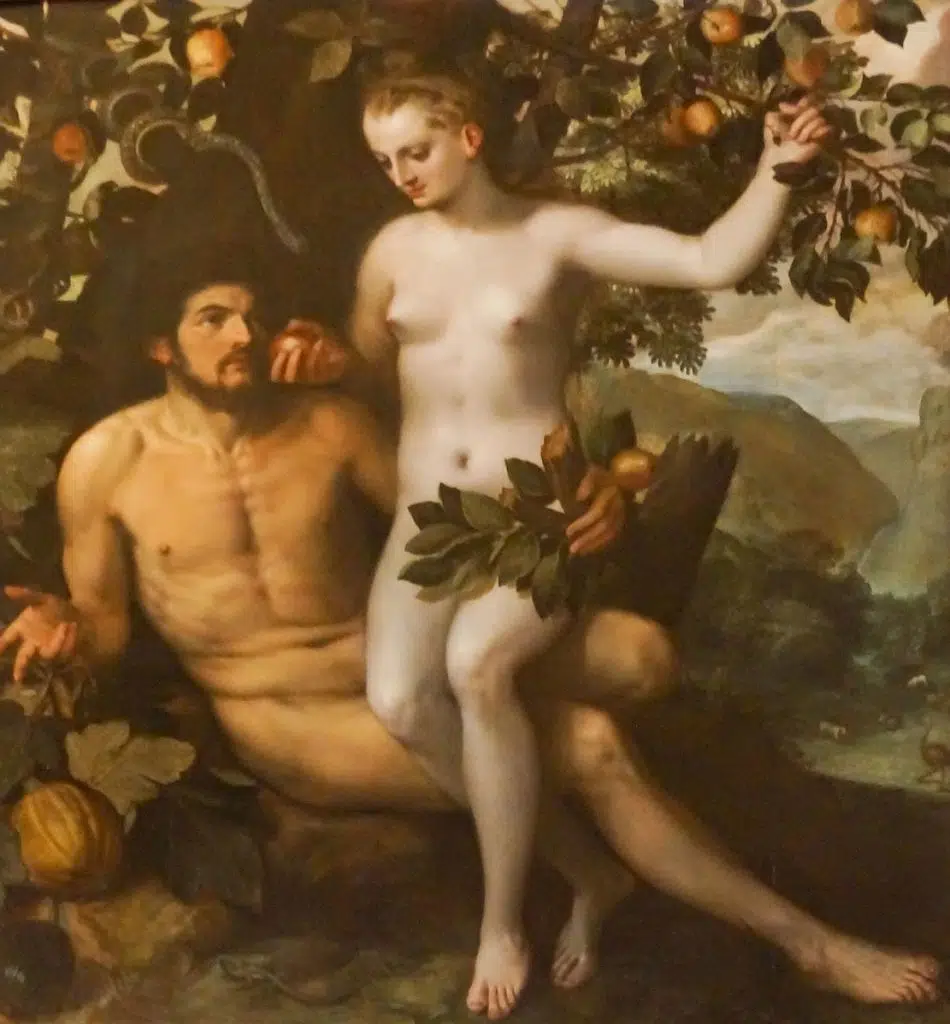
Adam and Eve by Frans Floris (PD-US-expired)
Moreover, the fact that the original unity of man and woman is a gift from God means that the original man is a gift from God to man himself, and God’s gift to woman; and the woman is also a gift from God to herself, and God’s gift to man. Man and woman have been created by God for marriage, to give themselves as God’s gifts to each other and to welcome each other as God’s gifts. Love is founded upon this dynamic of the divine gift. Every time man and woman unite by means of the conjugal act they reaffirm themselves as persons created in the image of God. They also mutually affirm their masculinity and femininity. The man affirms his masculinity thanks to his unity with woman, and at the same time he affirms her femininity. The woman affirms her femininity thanks to her unity with man, and at the same time she affirms his masculinity. They both reaffirm their inherent goodness or dignity as created by God in His image and likeness.
And through their original unity, man and woman, by God’s design, established the first human communion in the history of humanity. We can also call this first interpersonal communion the original human community.
This original human community is the foundation for all other human communities. It expresses even better than individuals can in themselves the fact that man and woman have been created in the image of God. And when God gifts such unity with children, the human community that arises from it is the best expression of the image of God in the world. Thus, we can say that the family is an icon (image) of the Holy Trinity.

The Holy Family by Bartolomé Esteban Perez Murillo (PD-US-expired)
2. The Original Fidelity of Man and Woman
We have already indicated that, according to TOB, fidelity was a good of the original marriage of man and woman. Christ intends for this fidelity to be a moral norm to follow till the death of the spouses. The enemies of fidelity, among others, are polygamy and adultery.
We have already discussed adultery according to TOB, including Christ’s stern warning against adultery of the heart. Unfortunately, some of the leaders of the People of Israel practiced polygamy, and others, especially kings, practiced adultery (e.g., King David). But thanks to the prophets, the People of Israel were reminded that idolatry was the same as committing adultery against God, Who had called them to love and worship Him only. This teaching presupposed the unity between one man and one woman, since the prophets were using the analogy Man-Wife / God-Israel. Unfortunately, this teaching was not heeded, and so God punished His People with the Babylonian exile and captivity (from about 597 to about 538).
But God remained faithful to Israel despite Israel’s infidelity. After about 60 years in exile, the new Persian empire allowed the People of Israel to return to Jerusalem and rebuild the Temple. In the same way, God’s unwavering fidelity to Israel should also be reflected by Christian spouses. The New Testament deepens and brings this divine fidelity to its fullness by teaching that Christ is the Groom and His Church (the new Israel) is his Bride (cf. Ephesians 5:21-33). In this transcendental and most beautiful and spiritual conjugal unity, Christians have both the model to follow and the divine grace to actually be able to follow it till death do them part. The special grace of the Sacrament of Marriage is precisely to reflect the unity and fidelity between Christ and His Church.
It would be a monstrosity to even conceive of the idea of Christ having more than one Church for His bride or to abandon the Catholic Church because of Her infidelity, which has taken place throughout the Church’s history. Christ has remained faithful despite the Church’s many and grievous sins. Her many saints, both canonized and anonymous, have also been faithful to Christ as sons and daughters of the Church. Catholics, married or not, have in the saints—especially the Blessed Mother—innumerable examples to follow in their Christian lives.
3. The Original Indissolubility of Marriage
Everything we have said about the good of fidelity also applies to the good of indissolubility. The two are very much interconnected. According to the TOB, in His debate with the Pharisees Christ also taught that indissolubility was part of the moral norm we must follow (see again Matt. 19:3-9).
We again have the teaching of the prophets and of Christ Himself. In the passage just referred to, Jesus condemns divorce between lawfully wedded men and women. Christian spouses must reflect in their marriage the indissolubility between Christ and his Church.
When Christ quoted Genesis 1:27 and 2:24 in his debate against the Pharisees, He put together the Genesis 1 creation account (man and woman created simultaneously) with Genesis 2’s sequential creation of man and then woman to emphasize, respectively, the oneness and the indissolubility of marriage. Man and woman are two distinct yet complementary human beings. Moreover, they have the same human nature and share the same dignity.
By referring to the beginning, Jesus is commanding us to cross the threshold that separates the present state of sinful human nature from the original state of innocent human nature. This means that the original state continues to be the norm for human knowledge of the truth about marriage and the way it ought to be lived. This commandment of Christ is not unfair despite the present state of sinfulness, because by His life, passion, death, resurrection and outpouring of the Holy Spirit, He gives us the grace to live as God originally intended.
4. The Original Procreative Meaning of the Conjugal Act
The unity in one flesh of Genesis 2:24 also indicates that such unity is the result of a conscious decision. Man belongs to his parents by generation, but he will “leave” them to unite himself to his wife by means of a free decision. The same thing can be said of the woman. This mutual choosing that defines the man-woman bond in marriage also defines the entire future of the human person upon the earth. This is so not only by virtue of procreation but also by virtue of the fact that the original unity of man and woman is part of the foundation of what it means to be a human person.
That is why Christ referred to this passage of Genesis. By manifesting the image of God in a fuller way through their conjugal union, man and woman constitute the beginning and model of such interpersonal communion for all men and women who will later choose this way of uniting themselves in marriage. The human bodies, male and female, which make this conjugal unity possible, become the essential elements of such unity, whose primary drive is the free and conscious decision that establishes the conjugal covenant.
The mutual election of the original man and the original woman is possible because they have, thanks to their original innocence, a mature consciousness of the meaning of the body as the physical expression of the human person.
“Taken out of man” (Genesis 2:23), woman becomes man’s wife and, at the same time, “mother of all the living” (3:20). The motherhood of woman has its origin in man because she has been formed out of him (2:22), and this means procreation has its origin in the mystery of the creation of the human person. It also means it is possible to reproduce creation and its mystery all throughout human history. The motherhood of woman out of man implies a commitment to all future generations.
This commitment also includes the awesome fact that through procreation, the image of God is transmitted from generation to generation (see Genesis 5:1-3). It is true that original sin is transmitted by propagation (procreation), not by imitation, as the Church teaches (see CCC 419). But it is also true that the image of God and all it means is transmitted, especially though not only, through the life-giving conjugal love of man and woman.
This transmission of the image of God through procreation continues to take place even after the Fall. This is easily proven by the passage from Genesis we have just alluded to. Recall that original sin takes place in Genesis chapter 3.
Finally, procreation after the Fall indicates that, despite the nefarious effects of original sin, man and woman still conserve in the depths of their being an echo of the conjugal meaning of the body. In Genesis 4:1, we read: “Now Adam knew [had conjugal relations with] Eve his wife, and she conceived and bore Cain, saying, ‘I have gotten a man with the help of the Lord.’”
Recall what we said in our article Human Dignity and the Conjugal Meaning of the Body: “St. John Paul II taught that openness to life and respect for the inseparable connection between love and life is also an intrinsic part of the conjugal meaning of the body.” Therefore, through the wonder of procreating new, beautiful human beings, Christians united by marriage can begin to rediscover the original conjugal meaning of the body. Adam himself, even after original sin, also valued the gift of procreation when he called his wife, the original woman, “mother of all the living” (Eve). See Genesis 3:20.
Related: Human Dignity and the Conjugal Meaning of the Body
“Woman,” in biblical revelation, is a title of honor and respect. This is why, Christ refers to his Blessed Mother as “woman” in the Gospels. Mary is the new Eve, the new mother of all the living, especially of those who belong to her son by virtue of Baptism.
5. The Sacrament of Marriage
In the first article of this series, What Is the Theology of the Body?, we said that St. Paul John II called the original unity of man and woman the original sacrament:
When St. John Paul II said that the original unity of man and woman was the original sacrament he meant something very special. He meant that through this original unity God poured His grace to man and woman and to the rest of creation. Let us remember that at that time man and woman were in the state of innocence. They had not fallen into original sin yet (Gn 3). Therefore, their bodies were efficacious signs of the invisible grace and love of God for man and woman and for the rest of creation (TOB 97-98).
We also added:
Unfortunately the original man and the original woman fell into sin (Gn 3). They lost the grace with which God had created them. This loss took away the efficaciousness of their original unity. It no longer transmitted the grace of God (CCC 416).
But God did not give up on humanity. He devised a plan of salvation. He chose a people, Israel, to gradually reveal Himself through history to Israel and the rest of humanity. He chose Israel to bring forth a promised Savior (Gn 3:15): Jesus Christ….
So when Jesus came to earth and instituted the sacraments He restored the original sacrament by raising Christian marriage to the dignity of a sacrament. In this way, Christian marriage would once again transmit the grace of God (CCC 1601).
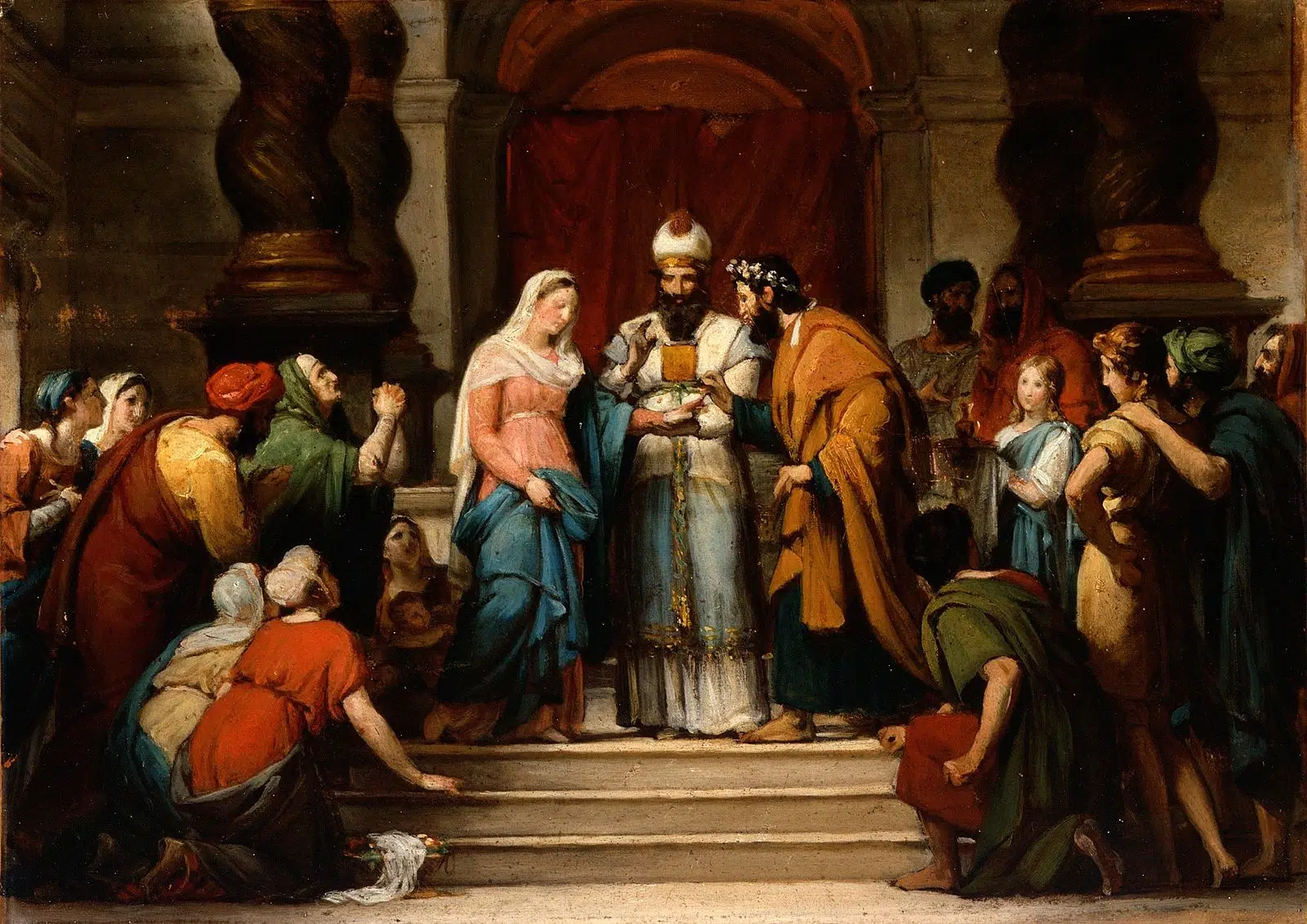
The Marriage of the Virgin (Jérôme-Martin Langlois)
We have already discussed at length the beautiful teaching of the Bible, the Church, and the TOB on the sacrament of marriage. It will suffice to recall that the special grace of the sacrament of marriage is to reflect the unity between Christ and His Church.
Related: The Sacrament of Marriage
In this sacrament are included all the prior goods, values or meanings of human sexuality, marriage, and the conjugal act. Moreover, through their mutual commitment expressed in words at their wedding, through their conjugal acts that are meant to express such commitment, and through their entire married life, the Christian spouses actualize all of those values.
Perhaps we should have said that they are called to actualize those goods, values or meanings. Unfortunately, nowadays there is a general and pervasive rejection of God’s laws about marriage. Adultery and contraception are the leading culprits of this massive apostasy.
Many bishops, priests, religious, and lay leaders continue to ignore or even reject these teachings. No wonder the People of God are perishing spiritually because of lack of knowledge, as the Prophet Hosea predicted many centuries ago: “My people are destroyed for lack of knowledge” (4:6).
This situation is completely contrary to God’s teaching through His Church. Saint Paul VI’s directive to all bishops towards the end of his prophetic encyclical Humanae Vitae is being almost completely disregarded:
And now as We come to the end of this encyclical letter, We turn Our mind to you, reverently and lovingly, beloved and venerable brothers in the episcopate, with whom We share more closely the care of the spiritual good of the People of God. For We invite all of you, We implore you, to give a lead to your priests who assist you in the sacred ministry, and to the faithful of your dioceses, and to devote yourselves with all zeal and without delay to safeguarding the holiness of marriage, in order to guide married life to its full human and Christian perfection. Consider this mission as one of your most urgent responsibilities at the present time. (HV 30, emphasis added.)
Related: The Teaching of the Prophetic Encyclical Humanae Vitae
Let us continue to pray and to educate with courage and humility about the teaching of God and His Church on the sacredness of marriage until the Church be restored through the restoration of Catholic married couples and their families.
Related Content
Adolfo is the Director of Education for Hispanic Outreach for Human Life International and of HLI's Hispanic outreach arm Vida Humana Internacional. He has a Masters in Theology from St. Vincent de Paul Regional (Major) Seminary and a License in Moral Theology from the Alphonsian Academy in Rome.
Adolfo has traveled frequently to VHI’s affiliates in Latin America to give talks, training sessions, and media interviews. He has authored and co-authored books, articles, reports, and a pro-life training course for Hispanics in the U.S. Adolfo has also participated in the production of two TV pro-life series in Spanish, which have been aired through EWTN en Español.


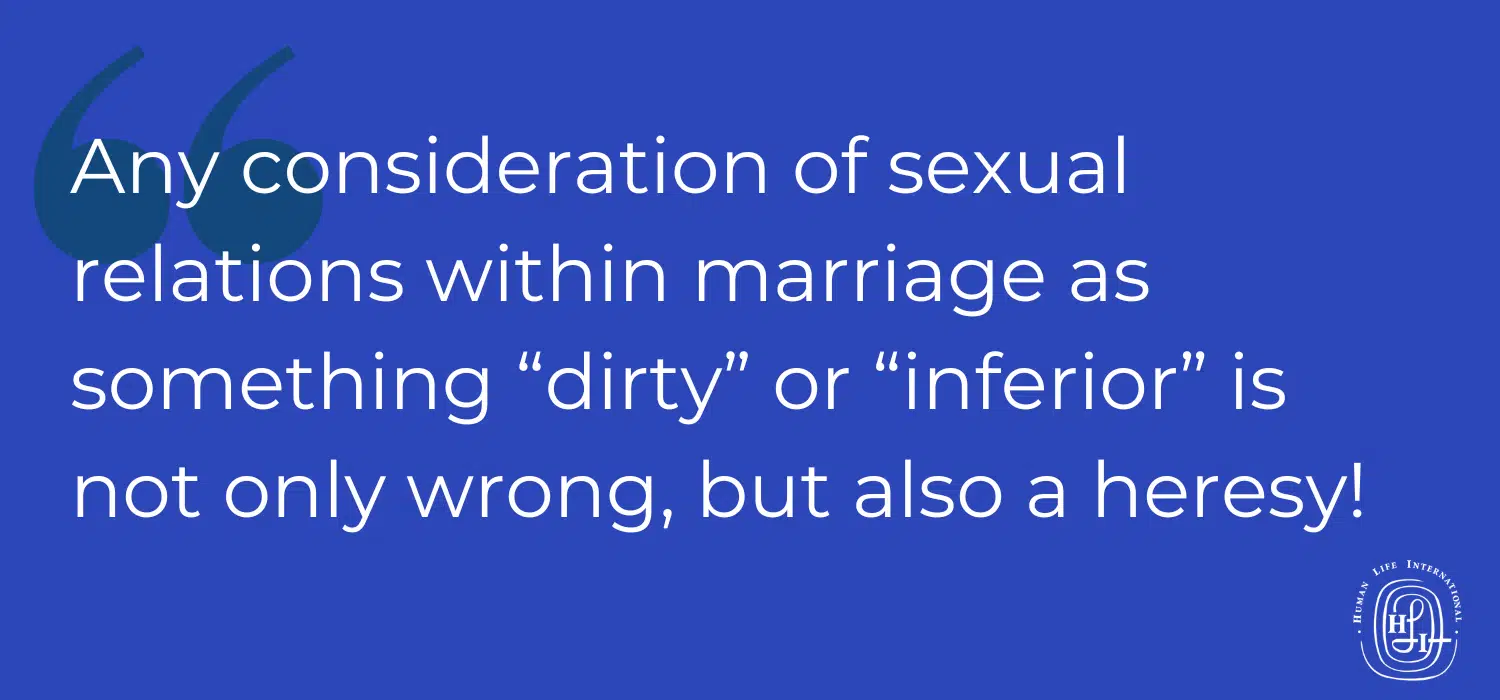
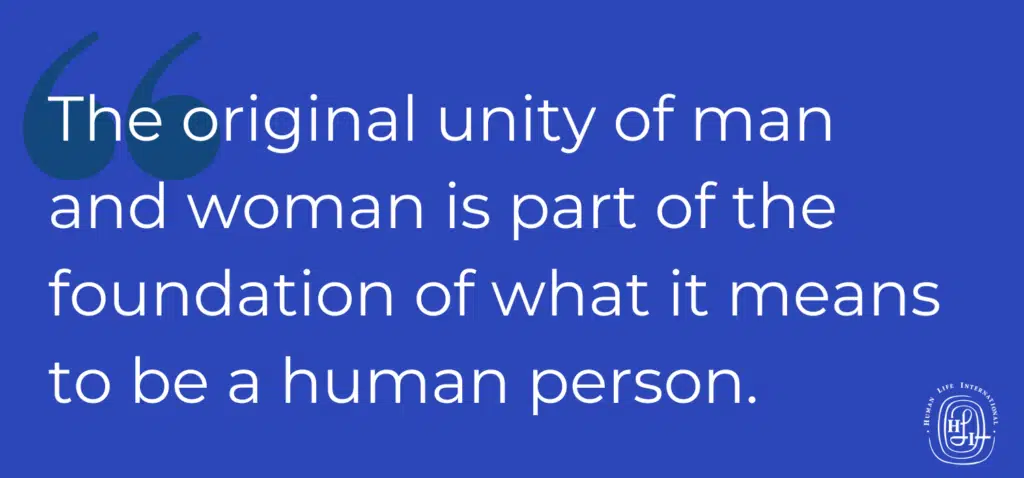
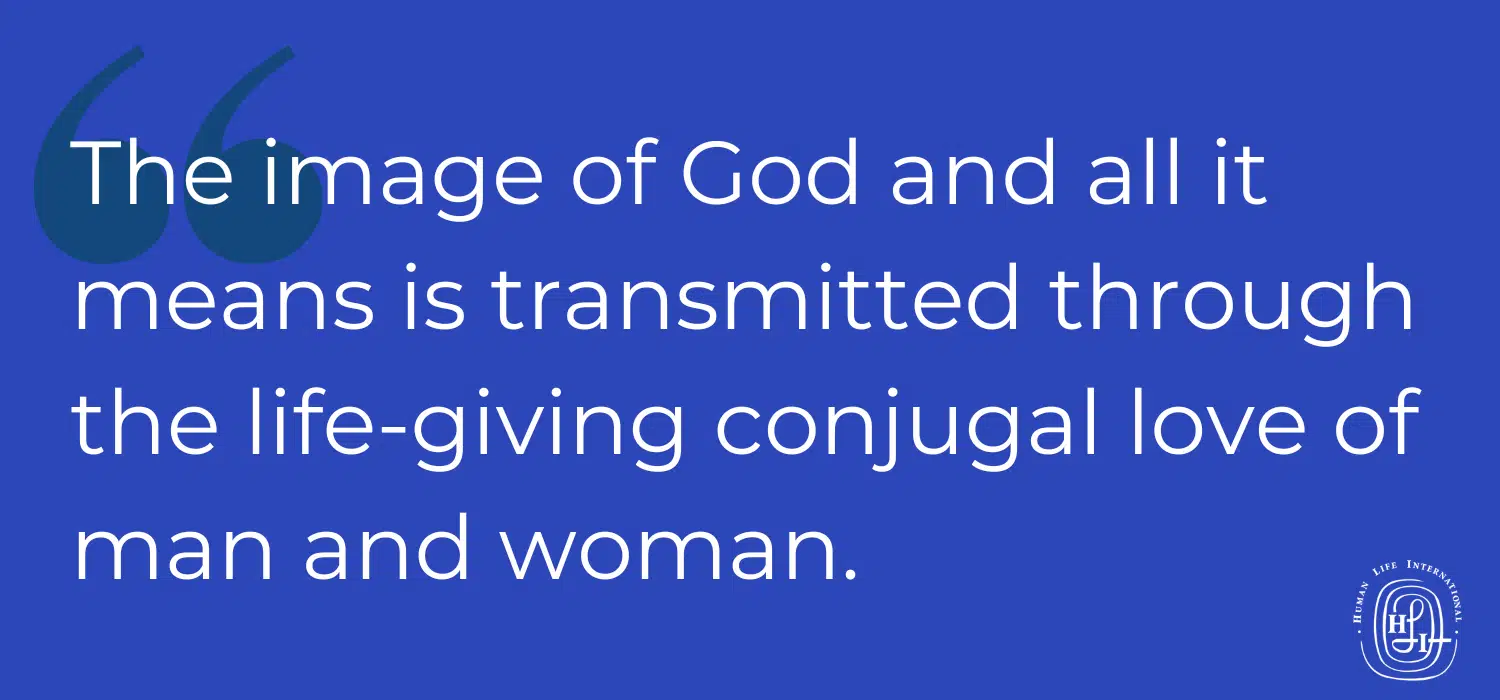



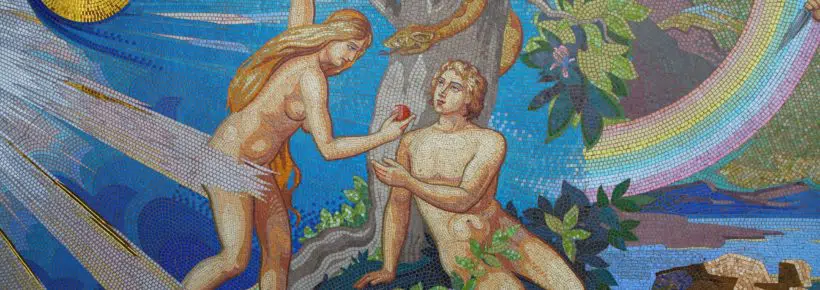

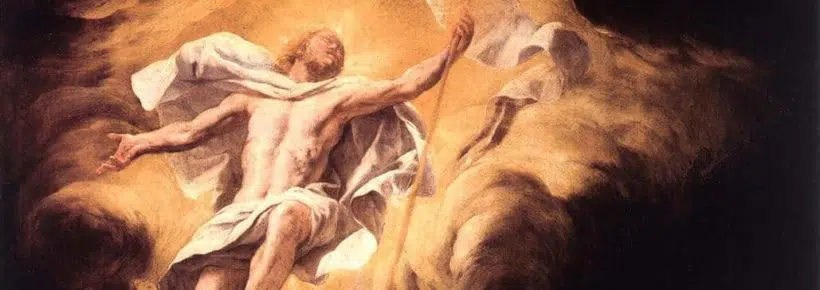
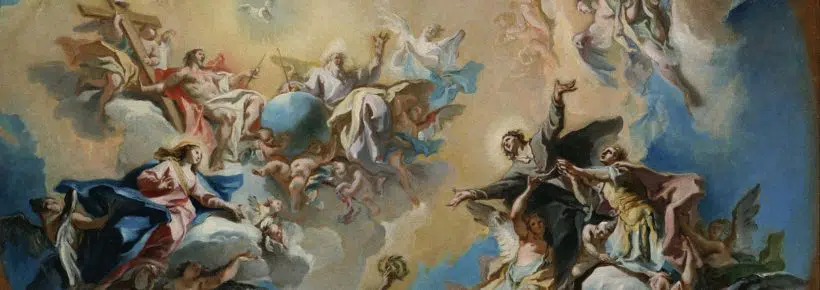

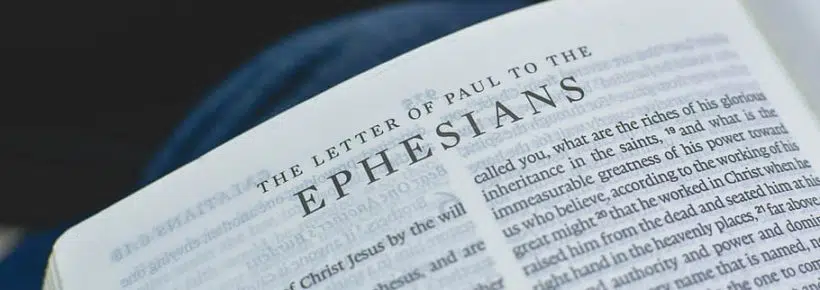




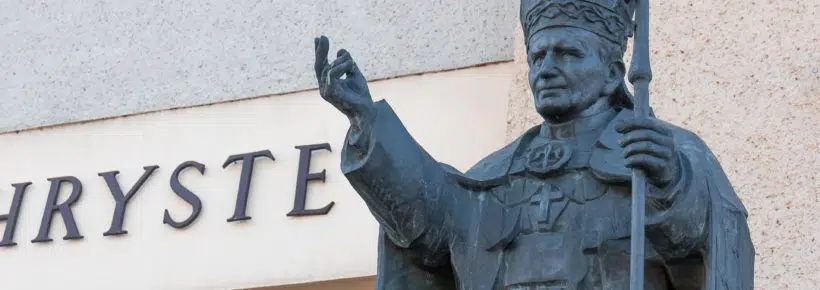

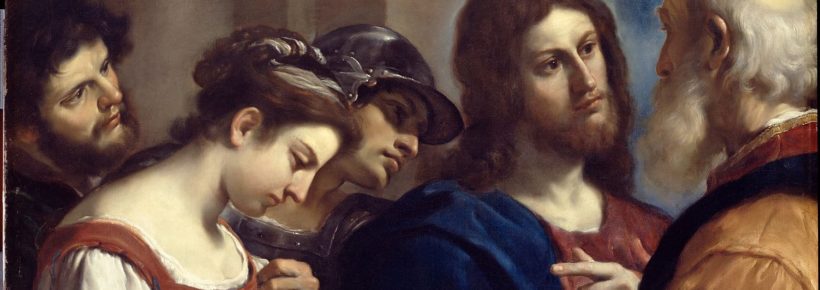
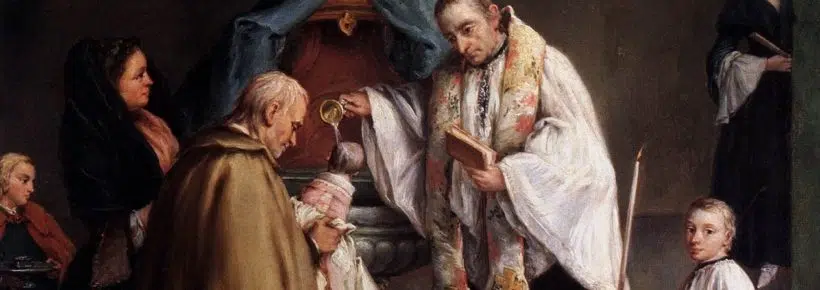

This is fruitful to our family couples
This is beautiful!!!!